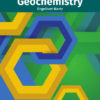The nature of thermochronologic and geochronologic questions are also frequently basically different. The formation age of minerals is normally irrelevant in thermochronology, whilst rates of processes are frequently of dominant interest. Geochronology has demonstrated key to our present-day understanding of the dynamic procedures that have shaped the Earth. The increase of high-precision geochronology worldwide in the last 15 years, in particular that generated by sensitive high-resolution ion microprobe (SHRIMP), has transformed the geological community’s view of the Proterozoic Eon, and the implicit assumptions that form the basis of most work conducted on rocks of that age. Geologic research and mapping requires the determinations of the ages and composition of rocks. Much of earth and planetary science relies on radioactive decay and growth of naturally occurring nuclides and their use as chronometers to understand the timing of events and rates of processes, and the use of radiogenic isotopes as tracers for understanding a wide range of phenomena. In one form or another, geochronologists have been practicing thermochronology, the use of radioisotopic dating to constrain thermal histories of rocks and minerals, for over 40 years. Building from lessons learned over these four decades, thermochronology continues to evolve due to technical developments, increasingly sophisticated theoretical models, and an expanding range of applications in geologic and planetary science. Most recently, interest in earth-surface processes and interactions between tectonics, erosion, and climate has drawn attention to techniques that can address the timing and rates of processes operating at temperatures below about 300°C.
Geochronology and Thermochronology will explore the research studies to the fundamentals of geochronology and thermochronology, diffusion in minerals and heat in the Earth, trace element behavior, and differentiation and recycling processes in the Earth and other solar system objects in a way that inspires further innovation, creative technique development, and applications.
This book will be of invaluable to graduate and upper-level undergraduate students practitioners as well as researchers in the field of geochemistry and geology.













